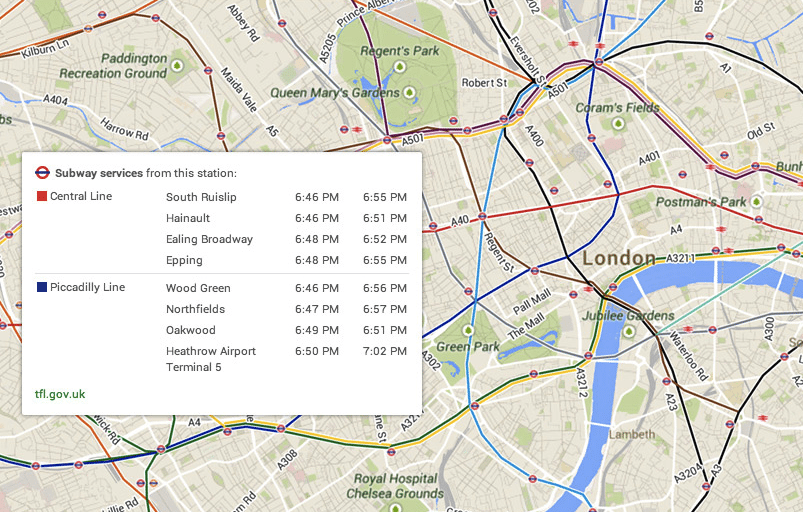Skift Take
Who's left to take on Google when it comes to local information, mapping, and expert advice?
The most popular travel app on smartphones has always been Google Maps, but today’s announcements at the Google I/O developers conference makes life even more difficult for what few mapping, planning, and local information competitors the search giant has left.
Google’s updated Maps products for smartphones, tablets, and desktop improve on what’s already the best mapping experience available and add enough new features that users can use them for every part of their travel planning experience, and are a serious threat to brands like Yelp and Foursquare as well as any travel-related app and the already declining guidebook industry.
Google trotted out different product managers and directors to discuss how Maps worked on each type of device, but a few points were consistent across all platforms. The first is the introduction of a five-point rating system for points of interest like restaurants, bars, hotels, and museums. Whether or not this replaces the distinctive 30-point Zagat system was not clear from the presentation (we’ve asked Google for comment). Google is also integrating more Zagat and former-Frommer’s editorial details, from reviews to top-10 type lists.
The mobile mapping product more deeply integrates Groupon-like offers, a Foursquare-like memory of the places you’ve been, a Yelp-like user review system, and “incident” reports that will suggest direction changes if there’s an accident or traffic.
Daniel Graf, director of Google Maps for mobile, used an iPad to demo a new feature of the Maps tablet app called “Explore” that makes suggestions for events and businesses as users browse the site.
The desktop experience has more planning-friendly tools, as well as exploration features, such as Photosphere, which produces a “3-D” tour of heavily-photographed points of interest that are auto-generated from user uploaded photos.
It’s similar to Bing’s Photosynth, which Microsoft launched four years ago and then left to wither.
Google made a big deal of how personalized and social the desktop Maps experience will soon become. “We could have billions of maps, one for every user,” said Seefeld. “A map that adapts to what you do. A map that’s build for you.” The map will highlight your friends’ favorites, as well as points of interest that are directly related to other searches you’re making; showing family-friendly restaurants if you’re looking at children’s museums, for example.
The personalized experience will require a greater buy-in to Google Plus by users in order for the benefits to appear, and, like Foursquare, will be strongest in cities like San Francisco and New York where there are active communities of users reviewing restaurants, bars, and other businesses.
There was also a strong presence for public transit across all Maps platforms. Product Manager for Google Maps Bernhard Seefeld said, “We want to make public transit much much much smarter,” and you see this ambition across the Maps products, as well as the updated Google Now, which will include real-time transit information.
The new smartphone and table apps for Android and iOS (no mention was made of Blackberry or Windows) will be released in early summer, and Google is allowing people to sign-up as early users of the desktop version.
Have a confidential tip for Skift? Get in touch
